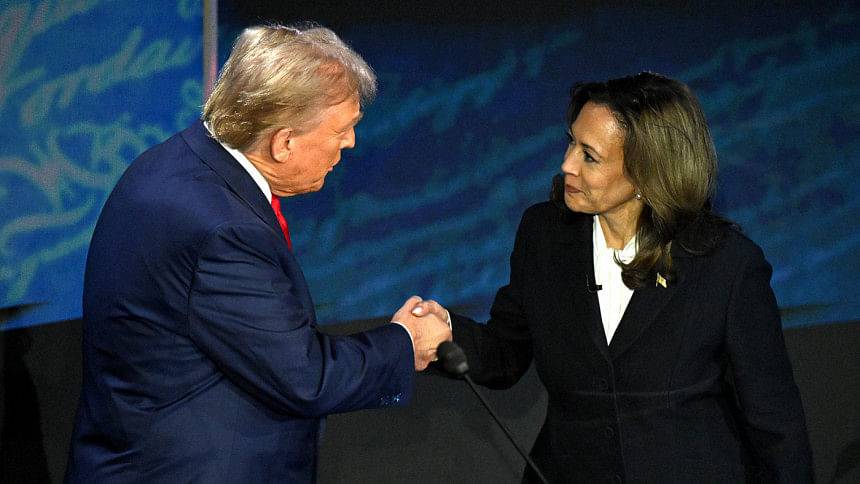What if the US presidential election is decided by… Omaha?
Most Americans have never been to Omaha, the largest city in the midwestern state of Nebraska, and many would not be able to point to it on a map.
However, there is a possibility that it could be the tipping point in the race for the White House in November.
The scenario involves Democrat Kamala Harris and Republican Donald Trump tying in the number of electoral college votes they receive, with a specific allocation of the seven key swing states.
One way a tie is possible is if Harris wins the “Rust Belt” states of Michigan, Pennsylvania and Wisconsin, while Trump claims the “Sun Belt” states of Arizona, Georgia, Nevada and North Carolina.
In this case, the second district of the state of Nebraska — which includes Omaha — would prove decisive on a national level.
This is due to a specific quirk in Nebraska’s allocation of electoral college votes.
In 48 of the 50 US states, the candidate who receives the most votes wins all that state’s electoral votes. For example, Harris’s home state of California is almost guaranteed to allocate the Democrat its trove of 54 electoral college votes.
Trump, conversely, is expected to win 40 electoral votes in Texas and another 30 in Florida.
The candidate who reaches 270 electoral college votes will win the US presidency.
However, Nebraska and the northeastern state of Maine both allocate some of its electoral votes by congressional district, rather than statewide.
Though Nebraska is a rural, staunchly conservative state, the second district has been won by Democrats in the past, including Barack Obama in 2008 and President Joe Biden in 2020.
Both years saw Nebraska provide four electors for Republicans and one for Democrats.
‘Blue Dot’
Nebraska’s second district has since acquired a nickname: the “Blue Dot,” referencing the color of the Democratic Party, as opposed to red, which is used by the Republicans.
In reality, “it is more of a purple dot in a sea of red” given its mixed electorate, according to Gregory Petrow, a professor of political science at the University of Nebraska.
“The district has only had two, single-term Democratic members of Congress over the recent decades,” Petrow told AFP. “All others have been Republicans.”
He pointed out Omaha, which is the major population center for the district, has a Republican mayor but its city council has a Democratic majority.
The stakes in Omaha are clear to both parties.
This past spring, Republicans tried, unsuccessfully, to change the state’s election rules to impose a winner-take-all system used by 48 other states.
And in March, before she was the official Democratic candidate, Vice President Harris sent her husband Doug Emhoff to Omaha, where the Second Gentleman gave a speech about women’s reproductive rights, a key issue this election that is seen as a motivator for voter turnout.
Reuben sandwiches
Last month, the running mates for both candidates — Tim Walz for Kamala Harris and J.D. Vance for Donald Trump — also visited the city, famous for being the place where Reuben sandwiches were invented (corned beef, sauerkraut, Thousand Island dressing and Swiss cheese grilled between two slices of rye bread).
Time will tell whether Omaha voters are swayed by Walz, who was born and raised in Nebraska, or if the campaigns’ television ads will play a bigger role.
The Congressional Leadership Fund (CLF), a Republican political action committee, announced on September 4 that it was increasing its advertising budget in Nebraska’s second district by $1.5 million, going from $2.8 million to $4.3 million.
Harris’s campaign, meanwhile, spent $700,000 on television advertisements in Nebraska during the month of August, according to advertising analytical firm Adimpact.
The Democrats plan to spend an additional $7 million in Omaha this election season.
If the previous scenario of the Rust Belt and Sun Belt divide remains true, winning Nebraska’s second district will clinch the election for Harris.
However, if Trump wins it in the same scenario, the rare event of a perfect tie — with 269 electors for each candidate — could play out.
In this case, which is unlikely but theoretically possible, the US House of Representatives would then be tasked with deciding the next president, as outlined in Article 2 of the US Constitution.
LondonGBDESK//



Comments are closed.